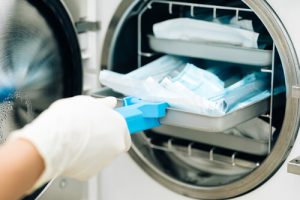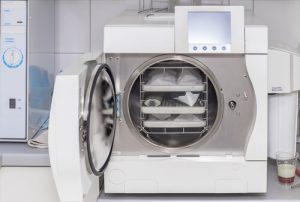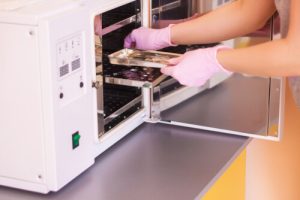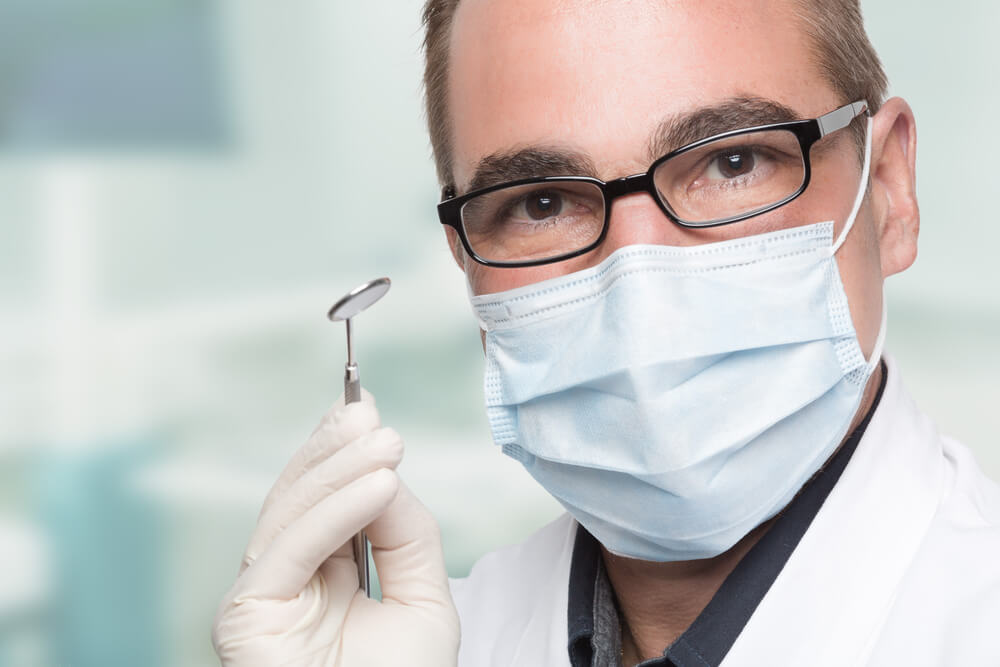Ethylene oxide sterilisation stands as a cornerstone in the medical device sterilisation processes, offering a highly effective method for ensuring the safety and usability of a wide range of medical devices. This article delves into the intricacies of ethylene oxide sterilisation, exploring its significance, the process involved, and its critical role in maintaining the highest hygiene and safety standards in healthcare settings.
By understanding this sterilisation technique, healthcare providers can continue to offer safe and reliable care through properly sterilised equipment.
Understanding Ethylene Oxide Sterilisation: An Overview
Understanding ethylene oxide sterilisation provides a comprehensive look into a critical sterilisation process used extensively in the medical field. Ethylene oxide (EO) sterilisation, also known as EO or the ETO sterilisation process, is a key method employed to sterilise medical devices that cannot withstand the high temperatures of steam sterilisation. This process involves using ethylene oxide gas to eliminate all viable microorganisms on medical devices, ensuring their safety and sterility for patient use. Given its effectiveness at lower temperatures, EO sterilisation is especially suitable for medical devices made from heat-sensitive materials, including plastics and resins, without compromising the integrity or functionality of these items.
Broad Spectrum Sterilisation
EO sterilisation is recognised for effectively sterilising various medical devices, from simple surgical instruments to complex devices with intricate components.
Suitability for Heat-Sensitive Materials
Its application at lower temperatures makes it an ideal sterilisation method for materials that cannot tolerate the heat of steam sterilisation, preserving the usability of delicate medical devices.
Comprehensive Microbial Elimination
Ethylene oxide gas penetrates deeply into all areas of the device, eliminating all types of microorganisms, including bacteria, viruses, fungi, and spores.
Process Considerations
The EO sterilisation process involves careful control of gas concentration, temperature, humidity, and exposure time to ensure thorough sterilisation while maintaining material integrity.
Safety and Environmental Concerns
While highly effective, EO sterilisation requires stringent safety measures to protect workers and the environment due to the toxic nature of ethylene oxide gas.
The Ethylene Oxide Sterilization Process: Step by Step
The ethylene oxide (EO) sterilisation process is a meticulously orchestrated procedure that ensures the sterility of many medical devices, particularly those sensitive to heat and moisture. This method leverages the gas’s potent antimicrobial properties to sterilise various medical equipment without damaging delicate materials. By understanding the step-by-step process of EO sterilisation, one gains insight into the complexity and effectiveness of this critical sterilisation method, highlighting its essential role in safeguarding patient health by providing sterile medical devices.
Preconditioning: Initially, medical devices are subjected to a preconditioning phase, exposing them to a specific humidity and temperature to make microorganisms more susceptible to the EO gas.
Gas Introduction: Following preconditioning, the items are placed in a sterilisation chamber, and EO gas is introduced. The concentration of EO, along with the temperature and humidity within the chamber, is precisely controlled to ensure optimal sterilisation conditions.
Exposure Time: The medical devices are exposed to the EO gas for a predetermined period, which can vary depending on the type of device and the load within the steriliser. This exposure ensures the complete elimination of all viable microorganisms.
Aeration: After exposure, the items undergo an aeration process in a separate chamber to remove residual EO gas. This phase is crucial for ensuring the safety of the medical devices for patient use, as EO gas can be harmful.
Sterility Assurance and Quality Control: Throughout the process, rigorous sterility assurance and quality control measures are in place, including biological indicators and chemical integrators, to confirm the effectiveness of the sterilisation and the absence of residual EO on the devices.
Advantages of Ethylene Oxide Sterilization in Healthcare
 As a sterilisation method, EO’s broad-spectrum efficacy against all known viruses, bacteria, fungi, and spores ensures the highest level of sterility for a wide range of medical devices. Its compatibility with most materials, including plastics, metals, and rubber, prevents damage to sensitive instruments, extending their usable life and preserving their integrity. This detailed examination of the benefits underscores the indispensable role of EO and other sterilisation methods in maintaining rigorous health and safety standards within the medical industry.
As a sterilisation method, EO’s broad-spectrum efficacy against all known viruses, bacteria, fungi, and spores ensures the highest level of sterility for a wide range of medical devices. Its compatibility with most materials, including plastics, metals, and rubber, prevents damage to sensitive instruments, extending their usable life and preserving their integrity. This detailed examination of the benefits underscores the indispensable role of EO and other sterilisation methods in maintaining rigorous health and safety standards within the medical industry.
- Broad-Spectrum Efficacy: EO sterilisation effectively destroys all microorganisms, providing sterility assurance for medical devices and ensuring patient safety.
- Material Compatibility: Its gentle processing conditions make it suitable for various materials, reducing the risk of damage to delicate instruments and equipment.
- Flexibility in Sterilisation Loads: EO’s gas form allows it to penetrate complex device geometries, ensuring thorough sterilisation of items with intricate designs or hard-to-reach areas.
- Preservation of Device Functionality: By avoiding high heat or moisture, EO sterilisation preserves the functionality and integrity of medical devices, particularly those containing electronic components or heat-sensitive materials.
- Cost-Effectiveness: The ability to sterilise large batches of equipment simultaneously, along with the extended lifespan of sterilised devices, contributes to the cost-effectiveness of EO sterilisation in healthcare settings.
- Compliance with Sterility Standards: EO sterilisation meets rigorous international sterility standards, ensuring that medical devices are safe for surgery, diagnostics, and other medical procedures.
Safety and Environmental Considerations in Ethylene Oxide Use
 As a potent sterilising agent, EO’s application in healthcare involves stringent protocols to safeguard human health and minimise ecological footprints. These considerations are paramount, given EO’s toxic nature and potential for environmental harm. Addressing the safety and environmental concerns of EO use involves a multifaceted approach, encompassing regulatory compliance, workplace safety measures, and innovative strategies to reduce EO emissions. This comprehensive attention to safety and sustainability underscores the healthcare industry’s commitment to responsible EO use, balancing its sterilisation benefits against potential risks.
As a potent sterilising agent, EO’s application in healthcare involves stringent protocols to safeguard human health and minimise ecological footprints. These considerations are paramount, given EO’s toxic nature and potential for environmental harm. Addressing the safety and environmental concerns of EO use involves a multifaceted approach, encompassing regulatory compliance, workplace safety measures, and innovative strategies to reduce EO emissions. This comprehensive attention to safety and sustainability underscores the healthcare industry’s commitment to responsible EO use, balancing its sterilisation benefits against potential risks.
Regulatory Compliance
Adherence to regulations set by bodies like the Environmental Protection Agency (EPA) and Occupational Safety and Health Administration (OSHA) ensures that EO use meets safety and environmental standards.
Workplace Safety Measures
Implementing robust safety protocols, including proper ventilation, leak detection systems, and personal protective equipment (PPE) for staff, mitigates EO exposure risks in healthcare facilities.
Emission Control Technologies
Adopting advanced emission control technologies reduces the release of EO into the environment, aligning sterilisation practices with environmental sustainability goals.
Monitoring and Reporting
Routine monitoring of EO levels within facilities and mandatory reporting of emissions help assess compliance with safety guidelines and environmental regulations.
Employee Training and Education
Comprehensive training programs for employees involved in EO sterilisation ensure they are well-informed about safety practices, reducing the risk of accidental exposure.
Alternative Sterilisation Methods
Research into and adoption of alternative sterilisation methods with lower environmental impacts reflect ongoing efforts to find sustainable solutions without compromising sterilisation efficacy.
Challenges and Solutions in Ethylene Oxide Sterilisation
 The use of EO gas, known for its broad-spectrum antimicrobial properties, in sterilisation facilities also raises concerns related to occupational safety, environmental impact, and the need for stringent regulation compliance. Addressing these challenges is crucial for ensuring EO sterilisation processes’ continued efficacy and sustainability, highlighting the industry’s commitment to patient safety and environmental stewardship.
The use of EO gas, known for its broad-spectrum antimicrobial properties, in sterilisation facilities also raises concerns related to occupational safety, environmental impact, and the need for stringent regulation compliance. Addressing these challenges is crucial for ensuring EO sterilisation processes’ continued efficacy and sustainability, highlighting the industry’s commitment to patient safety and environmental stewardship.
- Occupational Safety: The potential health risks posed by EO exposure to workers require robust safety protocols, including adequate ventilation, protective equipment, and continuous monitoring of EO levels within sterilisation facilities.
- Environmental Impact: EO’s classification as a hazardous air pollutant necessitates implementing strategies to minimise emissions, such as sophisticated capture and abatement technologies, to protect the environment.
- Regulatory Compliance: Navigating EO use’s complex regulatory landscape, including adherence to standards set by agencies like the Environmental Protection Agency (EPA) and Occupational Safety and Health Administration (OSHA), challenges facilities to maintain compliance while ensuring efficiency.
- Sterilisation Efficacy: Ensuring the consistent effectiveness of EO sterilisation across diverse medical devices requires ongoing validation and quality control measures to prevent sterilisation failures and ensure patient safety.
- Alternatives and Innovations: The exploration of alternative sterilisation methods and advancements in EO sterilisation technology offer potential solutions to mitigate the challenges associated with EO use, aiming to reduce health and environmental risks while maintaining or enhancing sterilisation efficacy.
In conclusion, ethylene oxide sterilisation plays a pivotal role in the healthcare industry, offering a reliable and effective solution for sterilising medical equipment that cannot withstand traditional heat-based methods. Its ability to ensure the safety and sterility of critical medical devices underscores its importance in medical settings worldwide. As we move forward, continuous improvements in safety and environmental practices related to ethylene oxide use are essential to maximise its benefits while minimising risks. Embracing these advancements will ensure that effective ethylene oxide sterilisation continues to be a cornerstone in delivering safe and effective healthcare.
If you’re seeking reliable and efficient sterilisation solutions that meet the highest safety and efficacy standards, look no further. Contact us at MELAG Autoclave at (02) 8880 7813 to explore our range of sterilisation products tailored for healthcare professionals. Our team is ready to assist you in selecting the perfect sterilisation system to ensure your medical devices are safe and ready for patient care. Don’t compromise on quality and safety—call us today to find out how we can support your sterilisation needs with state-of-the-art solutions.
References
Ethylene Oxide & Sterilization – AdvaMed
https://www.advamed.org/our-work/key-issues/sterilization-ethylene-oxide/#:~:text=Ethylene%20Oxide%20(EtO)%20gas%20is,safe%20surgeries%20and%20medical%20treatments.
Ethylene Oxide “Gas” Sterilisation
https://www.cdc.gov/infectioncontrol/guidelines/disinfection/sterilization/ethylene-oxide.html
Sterilisation for Medical Devices
https://www.fda.gov/medical-devices/general-hospital-devices-and-supplies/sterilization-medical-devices
Ethylene Oxide – an overview
https://www.sciencedirect.com/topics/veterinary-science-and-veterinary-medicine/ethylene-oxide
Effect of Ethylene Oxide Sterilization on Polyvinyl Alcohol Hydrogen
https://pubmed.ncbi.nlm.nih.gov/32264787/


